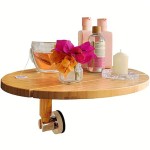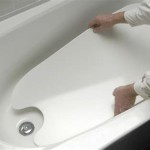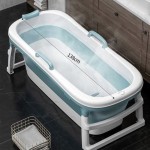Bathtub Shower Hose: A Comprehensive Guide
In the realm of bathroom fixtures, the bathtub shower hose may seem like an unassuming component, yet it plays a pivotal role in delivering a refreshing and revitalizing showering experience. This flexible conduit serves as the lifeline between the water source and the showerhead, offering maneuverability and convenience during your daily ablutions. As you embark on selecting or replacing a bathtub shower hose, understanding its features, types, and installation process will empower you to make informed decisions.
### Types of Bathtub Shower Hoses
The world of bathtub shower hoses presents a diverse range of options, each tailored to specific needs and preferences. Delving into the various types available will help you find the perfect match for your bathroom: 1.Metal Hoses:
Constructed from durable materials such as stainless steel or brass, metal hoses exude both resilience and longevity. Their ability to withstand high water pressure and temperature fluctuations makes them ideal for demanding environments. 2.PVC Hoses:
These hoses are crafted from polyvinyl chloride (PVC), a lightweight and flexible material that offers ease of installation and maneuverability. PVC hoses are often the budget-friendly choice, making them a popular selection for cost-conscious shoppers. 3.Rubber Hoses:
Known for their exceptional flexibility, rubber hoses provide a gentle touch and enhanced comfort during use. Their elasticity allows them to conform to various showerhead angles, ensuring a personalized showering experience. ###Choosing the Right Bathtub Shower Hose
Navigating the selection process for a bathtub shower hose requires careful consideration of several factors to ensure optimal performance and longevity: 1.Material:
Opt for a hose material that aligns with your desired qualities. Metal hoses excel in durability, PVC hoses prioritize affordability, and rubber hoses emphasize comfort. 2.Length:
Measure the distance between the water source and the desired showerhead placement to determine the appropriate hose length. Common lengths range from 48 to 72 inches, offering flexibility for various bathroom layouts. 3.Connection Type:
Ensure compatibility between the hose and your showerhead and water supply. Standard connection types include slip-fit, threaded, and universal connectors, with slip-fit being the most prevalent. 4.Flexibility:
Assess the hose's flexibility to ensure it can accommodate your preferred showering positions and angles. A flexible hose provides greater maneuverability and ease of use. ###Installation Process
Installing a bathtub shower hose is a straightforward task that can be accomplished with basic plumbing knowledge and tools. Follow these steps for a successful installation: 1.Turn Off Water Supply:
Begin by shutting off the water supply to the shower to prevent any unexpected water flow during the installation process. 2.Remove the Old Hose:
If replacing an existing hose, detach it from the showerhead and water supply using a wrench or pliers. 3.Attach the New Hose to the Showerhead:
Connect one end of the new hose to the showerhead, ensuring a secure and watertight fit. Hand-tightening is usually sufficient, but you may use a wrench if necessary. 4.Attach the Hose to the Water Supply:
Connect the other end of the hose to the water supply outlet. Again, ensure a secure connection to prevent leaks. 5.Turn On Water Supply:
Gradually turn on the water supply and inspect all connections for leaks. Tighten any loose connections as needed. ###Maintenance and Care
Maintaining your bathtub shower hose is crucial for ensuring its longevity and preventing potential issues. Adhere to these simple maintenance tips: 1.Regular Cleaning:
Periodically clean the hose with a mild detergent and water solution to remove dirt and buildup. Rinse the hose thoroughly to prevent residue accumulation. 2.Avoid Kinking or Twisting:
Be mindful not to kink or twist the hose during use, as this can restrict water flow and potentially damage the hose. 3.Inspect for Leaks:
Regularly inspect the hose and its connections for leaks. If you notice any signs of leakage, tighten the connections or replace the hose if necessary. By understanding the types, selection criteria, installation process, and maintenance practices associated with bathtub shower hoses, you can make informed decisions that enhance your showering experience while ensuring the longevity of this essential bathroom fixture.
Tips For Finding The Right Shower Hose

Danco Versa Spray 1 Portable 2 In Freestanding Handheld Shower Head Sprayer For Bathtubs Without Diverter White 10086 The Home Depot

Handheld Shower Walk In Tub Kohler Bath

Bathtub Shower Attachment Tub To Conversion Bathroom Remodel

Danco Versaspray Portable Handheld Shower Head With Hose Pet Sprayer For Bathtub Faucet Tub Rinser Round Garden Spouts 42 Inch 10086 Com

Danco Versa Spray Portable Hand Held Shower Head Fits Bathtubs Without Diverter Garden Tub Sprayer 10086 Com

How To Add A Handheld Shower Head Bathtub In 8 Easy Steps

Tub Wall Mount Clawfoot Shower Package Vintage

Ss 304 Grade Abs Silicon 1 5 Meter Hand Shower With Flexible Hose Pipe Zap Bath Fittings

Ello Allo 2 Handle Spray Handheld Tub And Shower Faucet With 8 In Head Combo Chrome Valve Included Es C Pr300 The Home Depot








